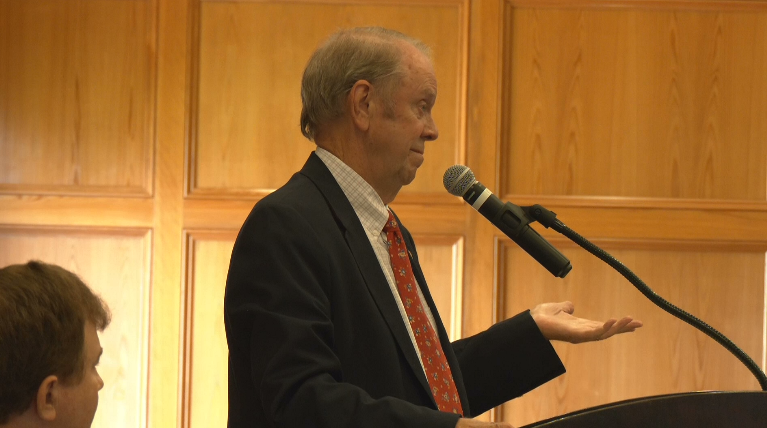Can climate-friendly farming save the Earth — and make money?
Efforts to reduce greenhouse gas emissions that alter the climate typically focus on the energy industry or getting big companies like Amazon to curb fossil fuel consumption. But farmers can also play a role by using new approaches to climate-friendly farming that can help sequester carbon in the soil.
Climate-smart farming has the potential to make a significant difference, said Paul Gambill, the CEO of Nori, a blockchain-based marketplace that aims to help fund farmers who are tackling climate change. Agriculture is responsible for 9 percent of greenhouse gas emissions, which stem from agricultural soil as well as livestock and rice production, according to the U.S. Environmental Protection Agency.
Climate-friendly farming focuses on an updated version of an old practice: using cover crops to reduce the tillage of farm soil. Cover crops — plants like legumes and clover that help fix nitrogen in the soil — have been used for centuries to add nutrients to farmland. The new technique relies on this old-fashioned idea, while also snubbing the more modern approach of tilling the soil, which can reduce its ability to absorb nutrients and water and make it vulnerable to erosion.
Trending News
Extreme weather events
Maryland-based farmer Trey Hill said he became interested in climate-friendly farming because of the increased number of extreme weather events, such as storms that drop five to 10 inches of rain.
“We were having all these extreme climate events and high heat, all these bad things going on with the climate, and then we started reflecting that,” Hill said. “Before, it was all economics and agricultural. But now a key part of the decision-making is climate change as well.”
Hill said he was helped by a Maryland-funded project that pays farmers to plant cover crops, part of the state’s efforts to reduce erosion and protect water quality in the Chesapeake Bay. “People used to think the soil needed to rest, but in a natural system, the soil doesn’t rest,” Hill said. “It thrives when it’s working and doing things, much the same as people.”
Farms benefit in multiple ways, such as reducing soil temperature and introducing more nutrients. Because tilling exposes soil carbon to the air, which then transforms it into carbon dioxide, no-till farming helps sequester carbon in the soil, according to Regeneration International. “Farmland is something that has the power to sequester a lot of carbon and make a difference while growing a lot of food,” Hill adds.
Monetization
Even though no-till farming can save money compared to conventional techniques—by reducing the amount of work and fertilizer needed to grow a crop—it’s not extremely widespread, according to U.S. Department of Agriculture statistics. That’s partly because of the costs associated with switching over to new farming methods, according to the USDA.
That’s where startups like Nori, the blockchain-based marketplace, can help. Paul Gambill, its CEO, sees farmers like Hill as “trailblazers” who are taking steps to make farming more climate-friendly. Monetizing carbon sequestration on farms may convince more farmers to adopt the practice, Gambill said.
“We are trying to create that financial incentive,” he said. Measuring the carbon impact of climate-friendly farming is the first step, which Nori is currently working on with Hill. After that, the company plans to sell certificates that represent carbon sequestration to big corporations that have committed to reducing their own carbon footprint.
Right now, the marketplace is at the prototype stage, but it aims to start running transactions in 2020, Gambill said. It could earn farmers tens of thousands per year, he added.
“We have this really great 2-for-1 opportunity,” Gambill said. “We can also provide a new financing mechanism for farmers and create a more sustainable food system.”





Leave a Reply